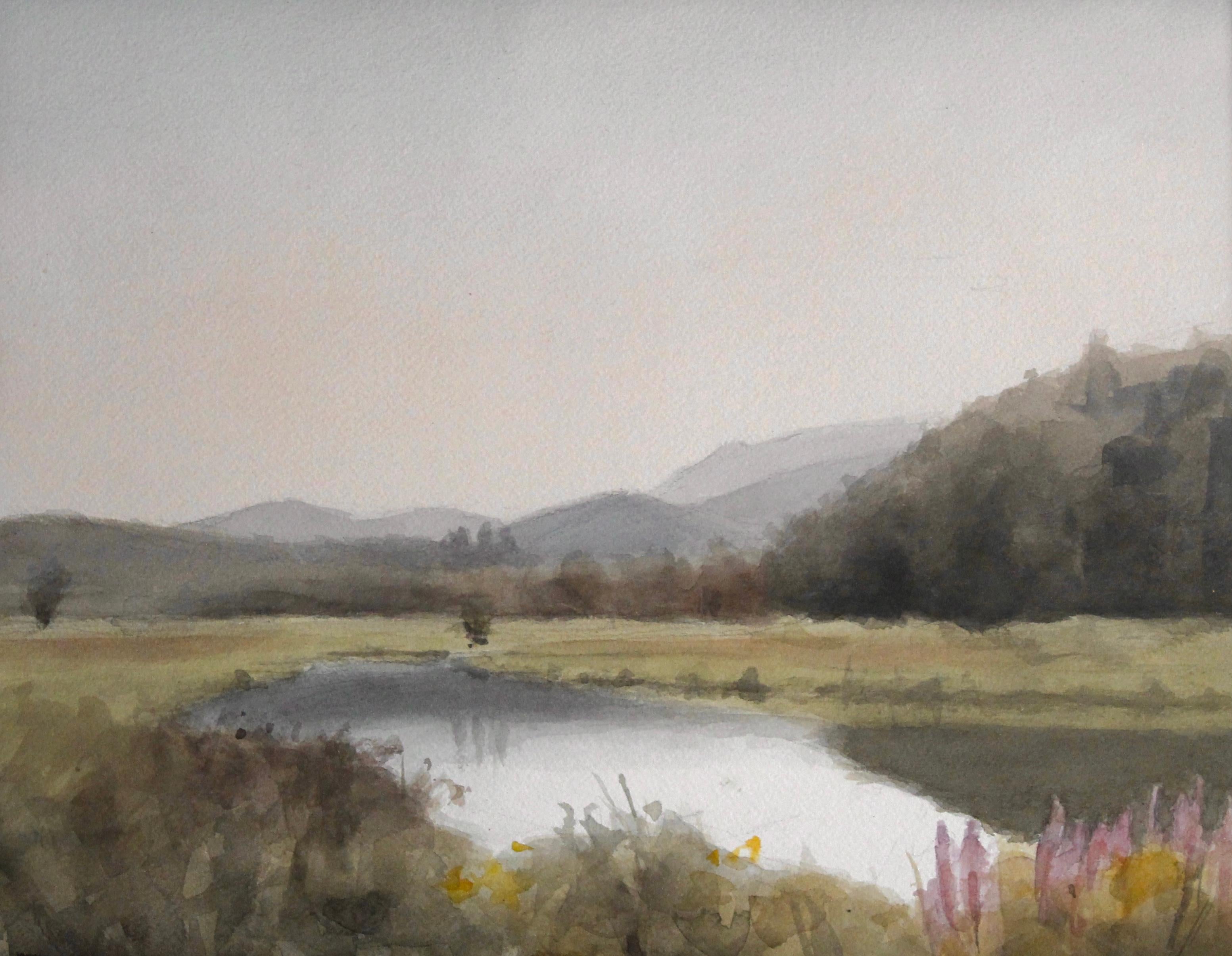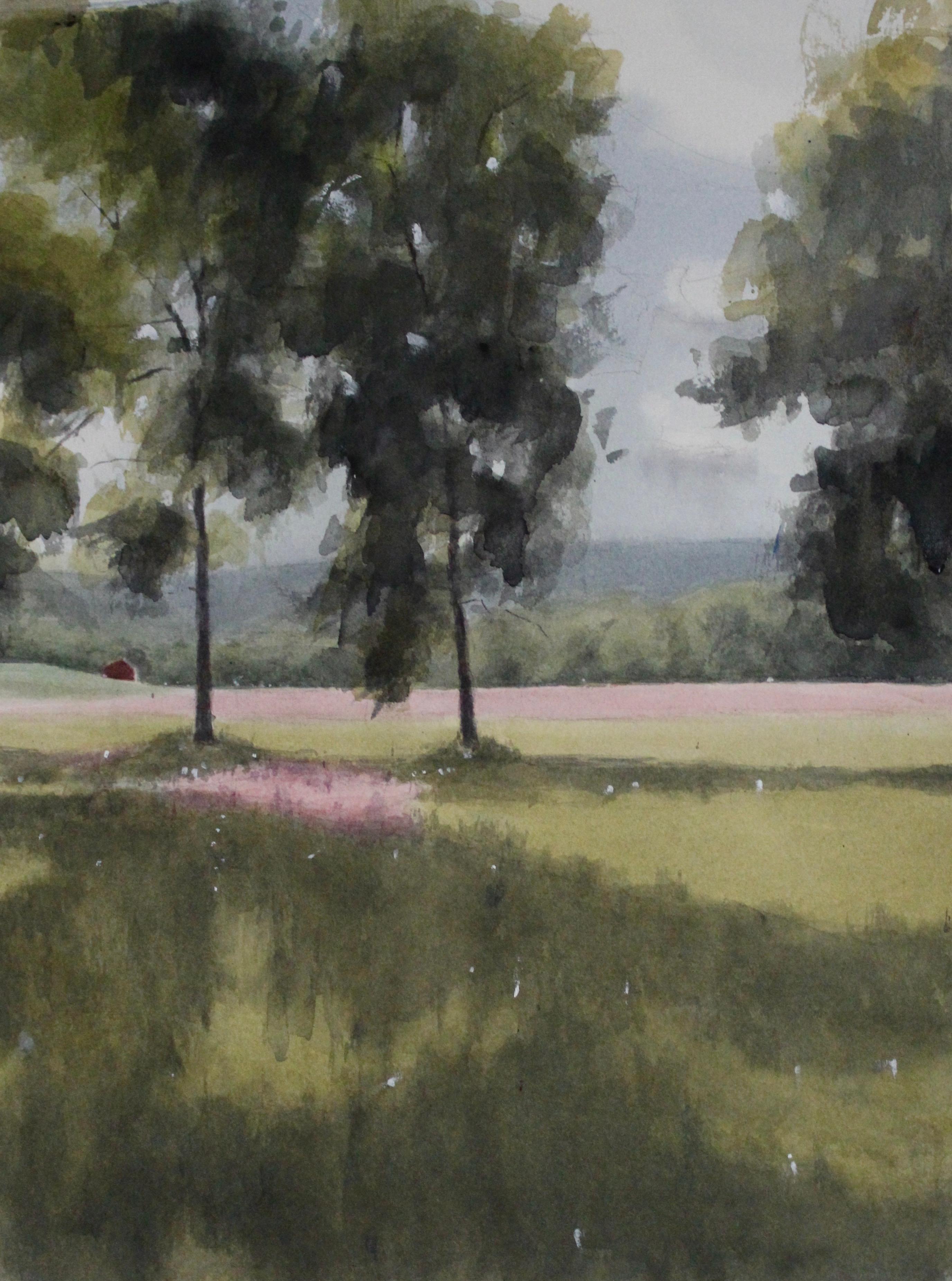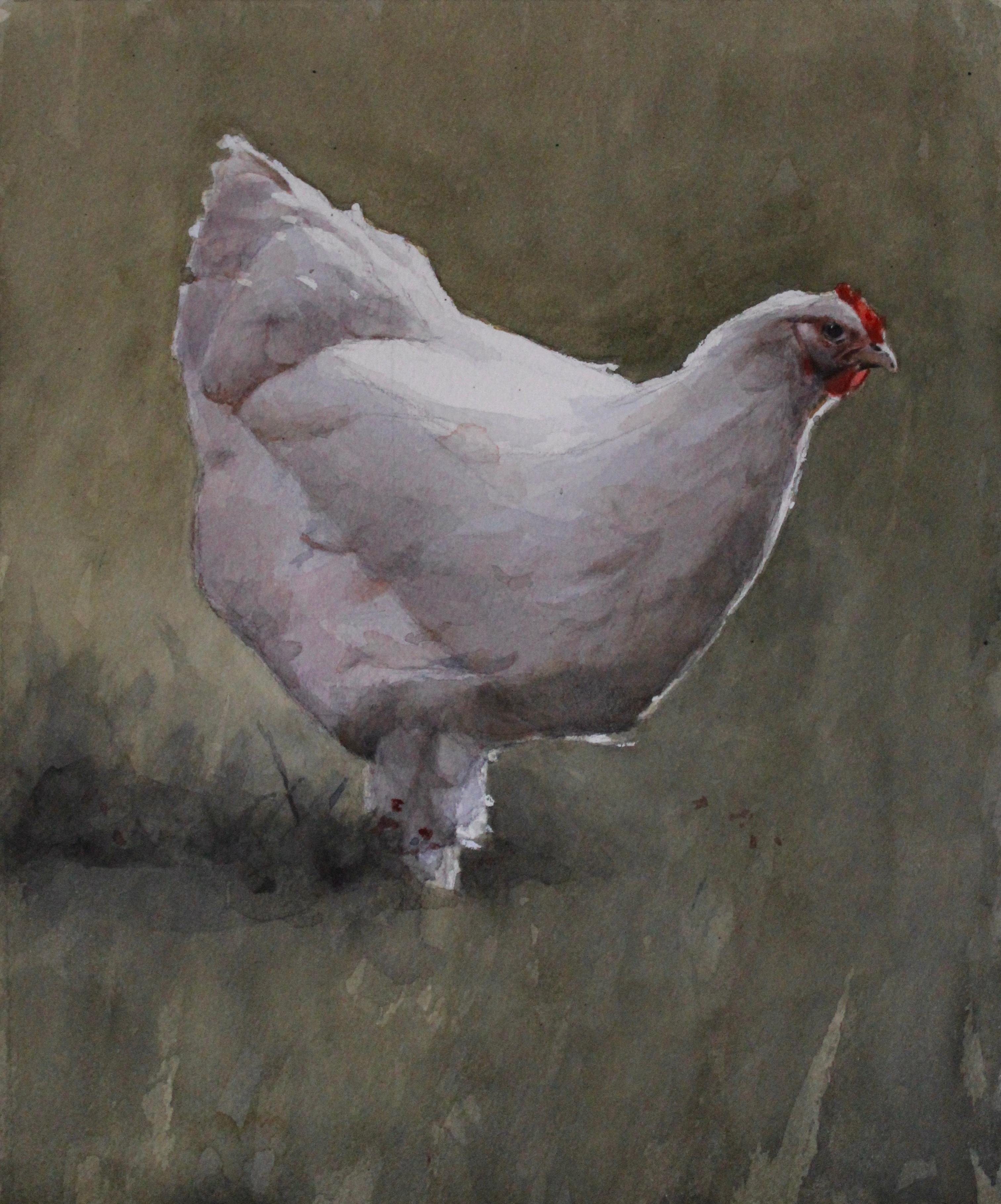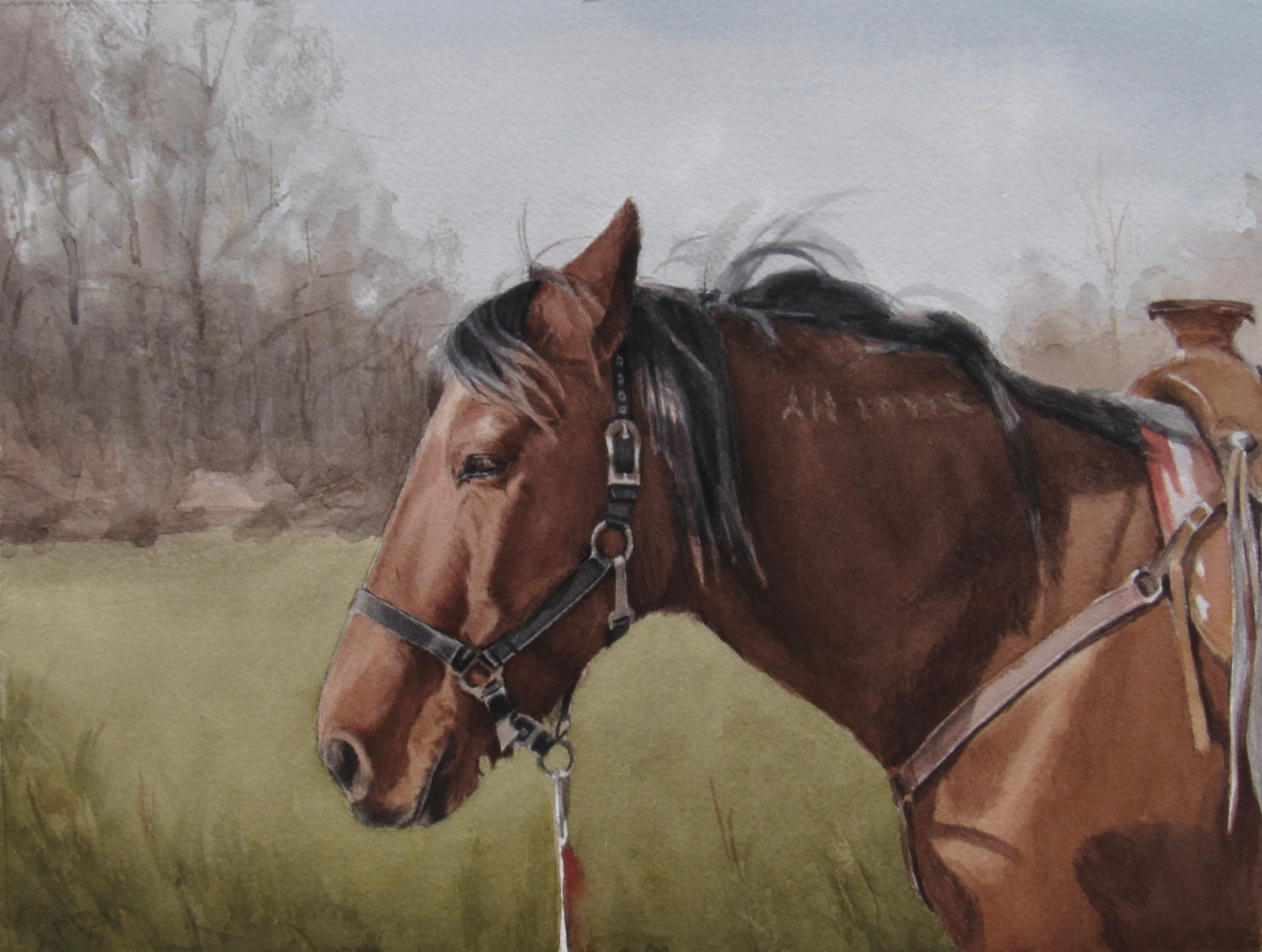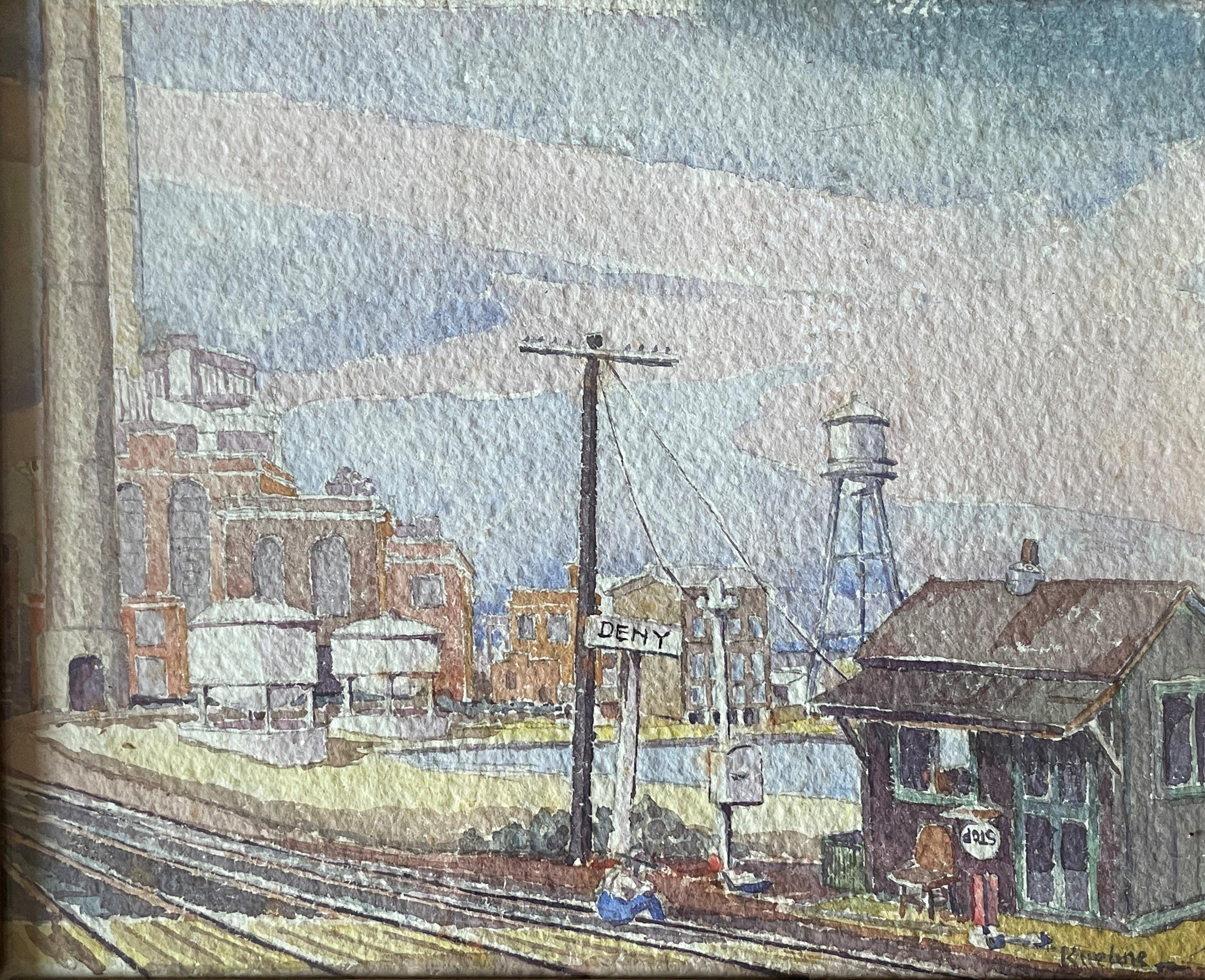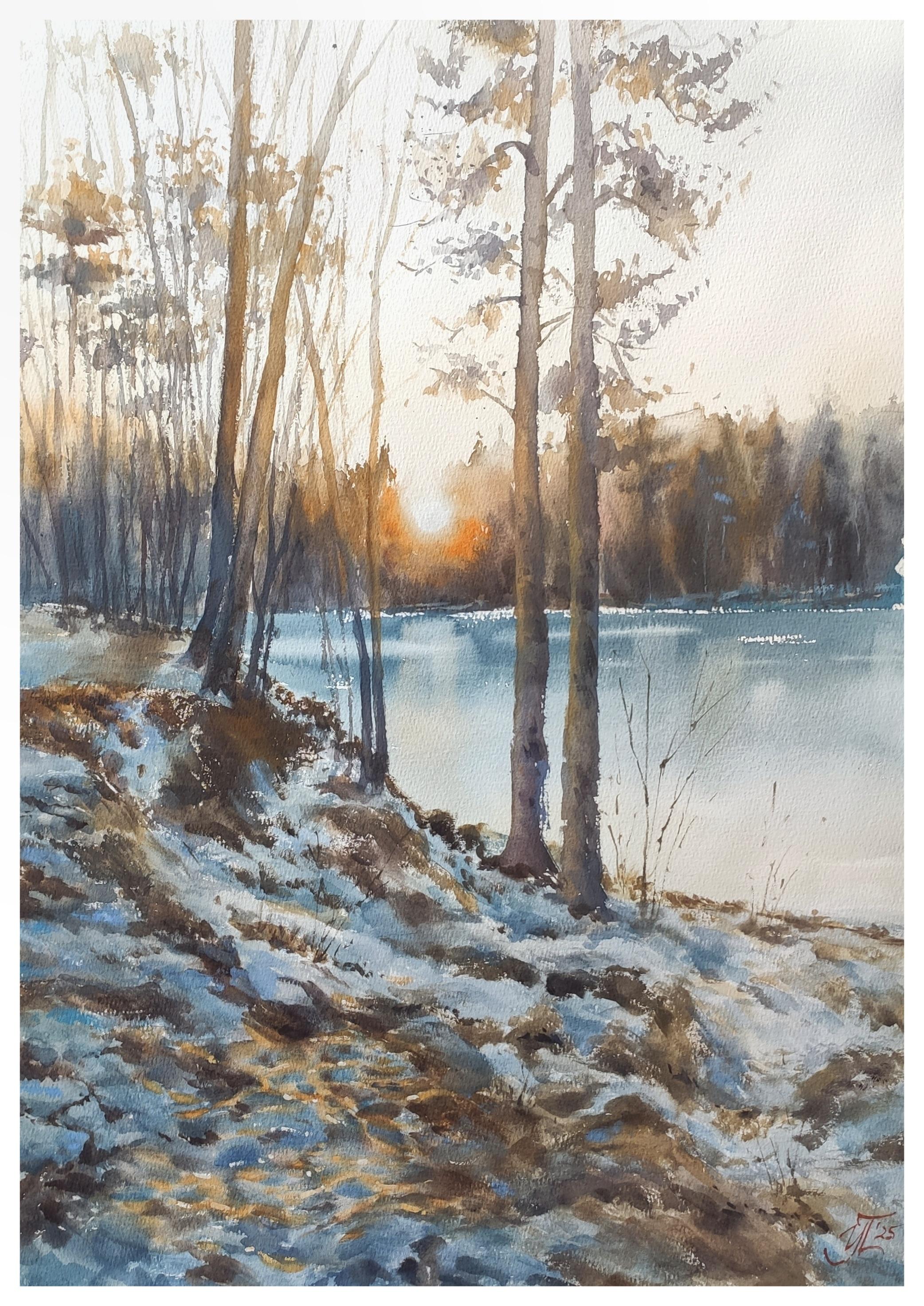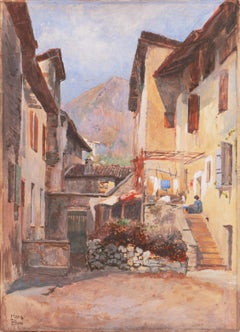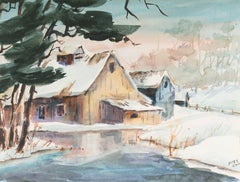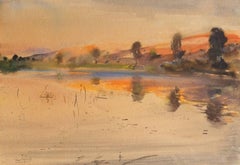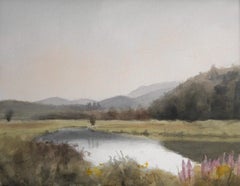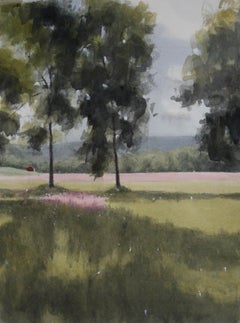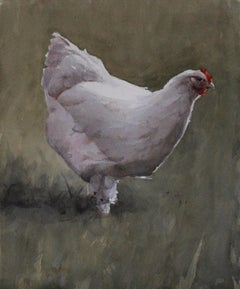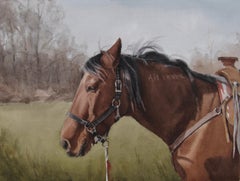Items Similar to 'Rural Landscape with Dutch Barn', Ranch
Want more images or videos?
Request additional images or videos from the seller
1 of 8
P. McCutcheon'Rural Landscape with Dutch Barn', RanchCirca 1950
Circa 1950
About the Item
A mid-twentieth century watercolor showing a peaceful rural landscape with numerous farm buildings including an elegant Dutch barn. Signed lower right, 'P. McCutcheon' (American, 20th century) and painted circa 1950.
- Creator:P. McCutcheon
- Creation Year:Circa 1950
- Dimensions:Height: 7.5 in (19.05 cm)Width: 11.75 in (29.85 cm)
- Medium:
- Movement & Style:
- Period:
- Condition:minor mat burn; unframed.
- Gallery Location:Santa Cruz, CA
- Reference Number:1stDibs: LU3443208403
About the Seller
5.0
Platinum Seller
Premium sellers with a 4.7+ rating and 24-hour response times
Established in 1982
1stDibs seller since 2013
731 sales on 1stDibs
Typical response time: <1 hour
- ShippingRetrieving quote...Shipping from: Santa Cruz, CA
- Return Policy
Authenticity Guarantee
In the unlikely event there’s an issue with an item’s authenticity, contact us within 1 year for a full refund. DetailsMoney-Back Guarantee
If your item is not as described, is damaged in transit, or does not arrive, contact us within 7 days for a full refund. Details24-Hour Cancellation
You have a 24-hour grace period in which to reconsider your purchase, with no questions asked.Vetted Professional Sellers
Our world-class sellers must adhere to strict standards for service and quality, maintaining the integrity of our listings.Price-Match Guarantee
If you find that a seller listed the same item for a lower price elsewhere, we’ll match it.Trusted Global Delivery
Our best-in-class carrier network provides specialized shipping options worldwide, including custom delivery.More From This Seller
View All'Alpine Landscape in Piedmont', Munich School Professor
Located in Santa Cruz, CA
Signed lower left, 'Hans Blum' (German, 1858-1942) and painted circa 1911.
Provenance: Exhibited, 'Jubiläums- Ausstellung der Münchener Künstler-Genossenschaft', München 1911 ('Anniversary Exhibition of the Munich Artists' Cooperative'). Label verso.
Hans Blum studied at the Munich Academy of Fine Arts with Ludwig von Löfftz and Ludwig Lindenschmit the Younger. He first worked as a portraitist in Nuremberg but later turned to genre painting, which he often carried out in the style of plein-air painting. Blum exhibited his Italian alpine...
Category
1910s Impressionist Landscape Drawings and Watercolors
Materials
Paper, Watercolor, Gouache, Illustration Board
'A Snow Covered Barn', Society of Watercolor Artists, Rural Winter, California
By Gladys Louise Bowman Fies
Located in Santa Cruz, CA
An elegant winter landscape watercolor showing a view of an old wooden barn and outbuildings beside a frozen pond.
Signed lower right 'Fies S.W.A.' for Gladys Louise Bowman Fies (American, 1909-2005) and painted circa 1965.
This notable California painter was born in Texas and studied with Millard Sheets, Rex Brandt, and George Post...
Category
1960s Impressionist Landscape Drawings and Watercolors
Materials
Paper, Watercolor
'Moss Beach, Monterey, California', Pacific Coastal Landscape, ASL NYC, Benezit
By Elmer Wachtel
Located in Santa Cruz, CA
An early-20th-century, landscape showing a view of the coastline at Moss Beach in Monterey County with slate-blue skies overhead and a view towards a stand ...
Category
Early 1900s American Impressionist Landscape Drawings and Watercolors
Materials
Paper, Watercolor, Gouache
'Late Sunset, California', LACMA, Laguna Beach Art Association, PAFA, CWS
By Karl Yens
Located in Santa Cruz, CA
Signed lower left, 'Karl Yens' (American, 1868-1945) and painted circa 1920.
A fine, early 20th century watercolor landscape showing the the luminous sunset serenely reflected in a still lake with elegant, calligraphic grasses.
Painter, illustrator, etcher and muralist, Karl Yens was born in Germany and first studied with Max Koch in Berlin and, subsequently, with Benjamin-Constant and Jean-Paul Laurens in Paris. He was a successful active muralist in both Germany and Scotland before immigrating to the United States in 1901. After arriving in America, Yens continued to paint murals in New York City and Washington, D.C. before settling in Southern California where he lived and painted until his death in 1945.
Karl Yens exhibited widely and with success, including at the 1915 Panama-California International Exposition in San Diego, Los Angeles County Museum of Art, Philadelphia Academy of Fine Arts, the Duquesne Club of Pittsburgh, San Diego Museum, the Orange County, California Museum, Astor Theatre in NYC and the Society of California Pioneers. He was the recipient of numerous medals and prizes and juried awards, including at the 1919 California Art Club, Laguna Beach Art...
Category
Early 20th Century Impressionist Landscape Drawings and Watercolors
Materials
Paper, Watercolor
'After the Storm', Impressionist Seascape
By Donald Sumner
Located in Santa Cruz, CA
A lyrically painted, mid-century watercolor showing a seagull hovering suspended above a turbulent ocean with dramatic and play of light between clouds and mist and with a view towar...
Category
1960s Impressionist Landscape Drawings and Watercolors
Materials
Paper, Watercolor
'Peaceful Valley', Country Landscape, National Veterans Creative Arts Festival
By Albert Blaisdell
Located in Santa Cruz, CA
Signed lower right, 'Albert Blaisdell' and painted circa 1975.
A watercolor and cartoon artist, Albert Blaisdell began his career in art after being wounded in combat in the Palau I...
Category
1970s Impressionist Landscape Drawings and Watercolors
Materials
Paper, Watercolor
You May Also Like
"A Kind of Paradise" (2024) by Mo Myra, Original Watercolor Painting
Located in Denver, CO
"A Kind of Paradise" (2024) by Mo Myra is a watercolor painting on paper that depicts a landscape in the foothills with the focus being on a river.
Mo Myra, born in 1990, is a Conne...
Category
2010s Impressionist Figurative Drawings and Watercolors
Materials
Paper, Watercolor
$800 Sale Price
20% Off
"Fields of Pink" (2024) by Mo Myra, Original Watercolor Painting of Landscape
Located in Denver, CO
"Fields of Pink" (2024) by Mo Myra is a watercolor painting on paper that depicts a landscape with large trees and pink flowers.
Mo Myra, born in 1990, is a Connecticut-based artis...
Category
2010s Impressionist Figurative Drawings and Watercolors
Materials
Paper, Watercolor
"Packed With Personality" (2024) by Mo Myra, Original Watercolor Painting
Located in Denver, CO
"Packed With Personality" (2024) by Mo Myra is a watercolor painting on paper that depicts a chicken standing in a grassy field.
Mo Myra, born in 1990, is a Connecticut-based artist...
Category
2010s Impressionist Figurative Drawings and Watercolors
Materials
Paper, Watercolor
$960 Sale Price
20% Off
"Wild at Heart" (2023) by Mo Myra, Original Watercolor Painting of Horse
Located in Denver, CO
"Wild at Heart" (2023) by Mo Myra is a watercolor painting of a saddled horse in a grassy field. This painting measures 15.5 x 18.5 inches framed and is ready to hang.
Category
2010s Impressionist Animal Drawings and Watercolors
Materials
Paper, Watercolor
$1,480 Sale Price
20% Off
"Train Station, " Max Kuehne, Industrial City Scene, American Impressionism
By Max Kuehne
Located in New York, NY
Max Kuehne (1880 - 1968)
Train Station, circa 1910
Watercolor on paper
8 1/4 x 10 1/4 inches
Signed lower right
Provenance:
Private Collection, Illinois
Max Kuehne was born in Halle, Germany on November 7, 1880. During his adolescence the family immigrated to America and settled in Flushing, New York. As a young man, Max was active in rowing events, bicycle racing, swimming and sailing. After experimenting with various occupations, Kuehne decided to study art, which led him to William Merritt Chase's famous school in New York; he was trained by Chase himself, then by Kenneth Hayes Miller. Chase was at the peak of his career, and his portraits were especially in demand. Kuehne would have profited from Chase's invaluable lessons in technique, as well as his inspirational personality. Miller, only four years older than Kuehne, was another of the many artists to benefit from Chase's teachings. Even though Miller still would have been under the spell of Chase upon Kuehne's arrival, he was already experimenting with an aestheticism that went beyond Chase's realism and virtuosity of the brush. Later Miller developed a style dependent upon volumetric figures that recall Italian Renaissance prototypes.
Kuehne moved from Miller to Robert Henri in 1909. Rockwell Kent, who also studied under Chase, Miller, and Henri, expressed what he felt were their respective contributions: "As Chase had taught us to use our eyes, and Henri to enlist our hearts, Miller called on us to use our heads." (Rockwell Kent, It's Me O Lord: The Autobiography of Rockwell Kent. New York: Dodd, Mead and Co., 1955, p. 83). Henri prompted Kuehne to search out the unvarnished realities of urban living; a notable portion of Henri's stylistic formula was incorporated into his work.
Having received such a thorough foundation in art, Kuehne spent a year in Europe's major art museums to study techniques of the old masters. His son Richard named Ernest Lawson as one of Max Kuehne's European traveling companions. In 1911 Kuehne moved to New York where he maintained a studio and painted everyday scenes around him, using the rather Manet-like, dark palette of Henri.
A trip to Gloucester during the following summer engendered a brighter palette. In the words of Gallatin (1924, p. 60), during that summer Kuehne "executed some of his most successful pictures, paintings full of sunlight . . . revealing the fact that he was becoming a colorist of considerable distinction." Kuehne was away in England the year of the Armory Show (1913), where he worked on powerful, painterly seascapes on the rocky shores of Cornwall. Possibly inspired by Henri - who had discovered Madrid in 1900 then took classes there in 1906, 1908 and 1912 - Kuehne visited Spain in 1914; in all, he would spend three years there, maintaining a studio in Granada. He developed his own impressionism and a greater simplicity while in Spain, under the influence of the brilliant Mediterranean light. George Bellows convinced Kuehne to spend the summer of 1919 in Rockport, Maine (near Camden). The influence of Bellows was more than casual; he would have intensified Kuehne's commitment to paint life "in the raw" around him.
After another brief trip to Spain in 1920, Kuehne went to the other Rockport (Cape Ann, Massachusetts) where he was accepted as a member of the vigorous art colony, spearheaded by Aldro T. Hibbard. Rockport's picturesque ambiance fulfilled the needs of an artist-sailor: as a writer in the Gloucester Daily Times explained, "Max Kuehne came to Rockport to paint, but he stayed to sail." The 1920s was a boom decade for Cape Ann, as it was for the rest of the nation. Kuehne's studio in Rockport was formerly occupied by Jonas Lie.
Kuehne spent the summer of 1923 in Paris, where in July, André Breton started a brawl as the curtain went up on a play by his rival Tristan Tzara; the event signified the demise of the Dada movement. Kuehne could not relate to this avant-garde art but was apparently influenced by more traditional painters — the Fauves, Nabis, and painters such as Bonnard. Gallatin perceived a looser handling and more brilliant color in the pictures Kuehne brought back to the States in the fall. In 1926, Kuehne won the First Honorable Mention at the Carnegie Institute, and he re-exhibited there, for example, in 1937 (Before the Wind). Besides painting, Kuehne did sculpture, decorative screens, and furniture work with carved and gilded molding. In addition, he designed and carved his own frames, and John Taylor Adams encouraged Kuehne to execute etchings. Through his talents in all these media he was able to survive the Depression, and during the 1940s and 1950s these activities almost eclipsed his easel painting. In later years, Kuehne's landscapes and still-lifes show the influence of Cézanne and Bonnard, and his style changed radically.
Max Kuehne died in 1968. He exhibited his work at the National Academy of Design, the Art Institute of Chicago, the Carnegie Institute in Pittsburgh, the Memorial Art Gallery of the University of Rochester, and in various New York City galleries. Kuehne's works are in the following public collections: the Detroit Institute of Arts (Marine Headland), the Whitney Museum (Diamond Hill...
Category
1910s American Impressionist Landscape Drawings and Watercolors
Materials
Paper, Watercolor
The last rays Watercolor landscape
Located in Zofingen, AG
Watercolor painting of winter with bright rays of the setting sun. Deep snow shadows, a winter forest in the rays of the sun, a snow-covered earth - this watercolor painting with the...
Category
2010s Impressionist Landscape Drawings and Watercolors
Materials
Paper, Watercolor
Recently Viewed
View AllMore Ways To Browse
Unframed Mirror
36x36 Painting
Gold Black Gold Black Painting
Movie Art
Painting On Linen
24x24 Abstract Art
Avant Garde Art
Engraving French
Dark Oil Painting
Framed Painting On Glass
Picasso Vintage Print
German Contemporary Photography
Contemporary Illustrations
Unsigned Painting
Israeli Art
Father Son
Famous Photographers
Framed Acrylic Paintings On Paper
